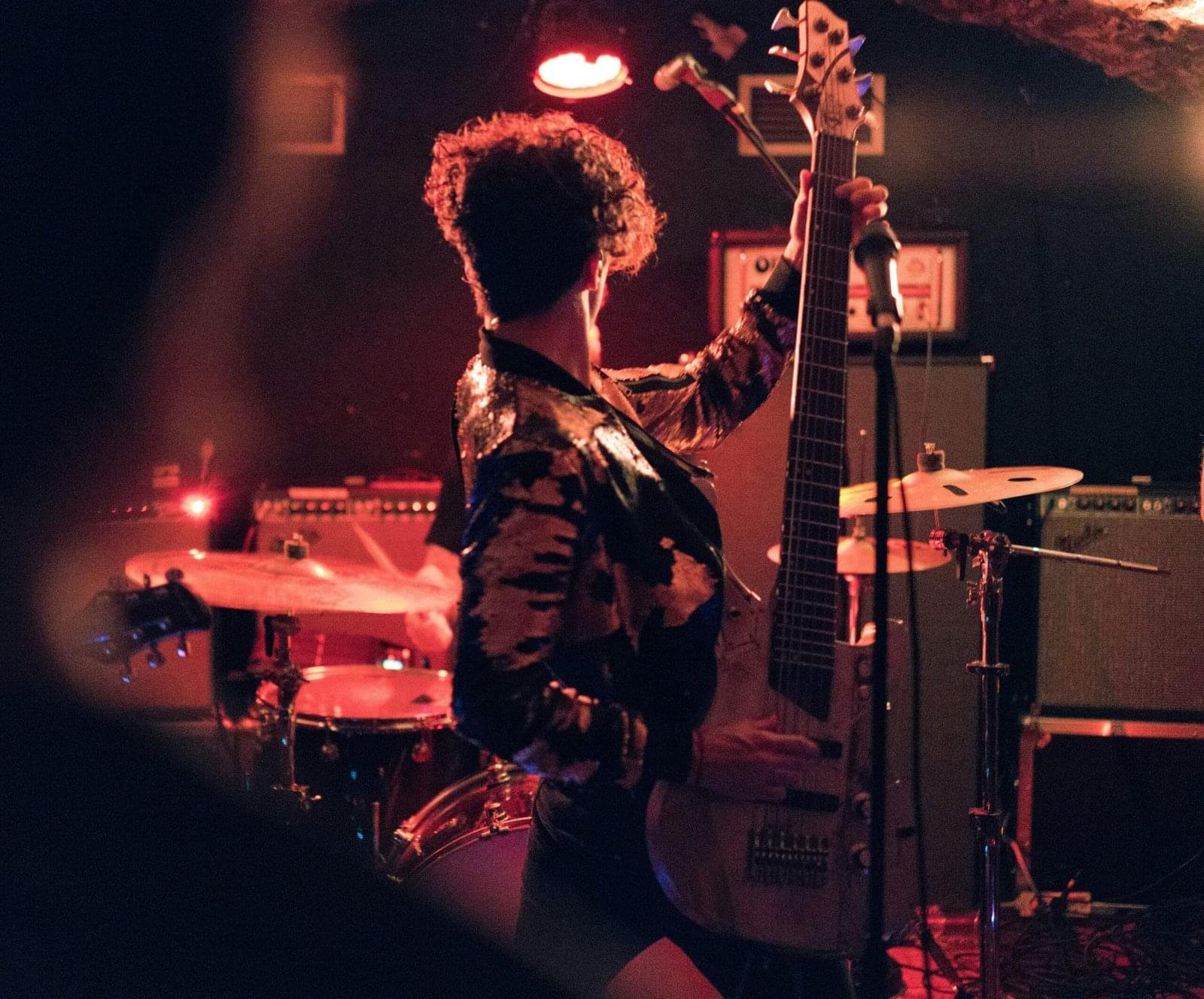Ultimate 10-Day Japan Itinerary for First-Timers Guide: Cities, Countryside, and Cherry Blossoms in 2025
Why This 10-Day Japan Itinerary Is Your Perfect Adventure
Picture yourself standing beneath a canopy of cherry blossoms, the air filled with their delicate scent, as Tokyo’s skyscrapers loom in the distance. A few days later, you’re gazing at Mount Fuji’s majestic peak, framed by pink petals, before wandering Kyoto’s ancient temples and Hiroshima’s poignant memorials. This 10-day Japan itinerary, designed for first-timers starting March 29, 2025, is your gateway to that vision—a seamless blend of vibrant cities and tranquil countryside, timed to catch the cherry blossom season at its peak. Whether you’re drawn to the neon glow of Shibuya, the serenity of Miyajima’s floating shrine, or the playful deer of Nara, this guide delivers it all.
You’ll find a detailed day-by-day plan packed with must-see spots like Meiji Shrine, Fushimi Inari Taisha, and Itsukushima Shrine, alongside practical travel tips to navigate Japan effortlessly. Seasonal highlights spotlight the sakura, blooming brilliantly from late March to early April 2025, turning parks, riversides, and mountainsides into fleeting masterpieces. This isn’t just an itinerary—it’s a comprehensive resource with city profiles, historical deep dives, photography advice, hanami recipes, and budgeting tools, all formatted with headings, lists, and tables for easy reading. Let’s embark on your ultimate Japanese journey!
Your 10-Day Japan Itinerary Overview
This itinerary is a carefully curated mix of Japan’s urban giants—Tokyo, Kyoto, and Hiroshima—and its countryside treasures—Lake Kawaguchiko, Nara, and Miyajima Island. It’s tailored for first-timers, balancing bustling cityscapes with peaceful retreats over 10 days, from March 29 to April 7, 2025. You’ll start with three days in Tokyo, soaking in its electric vibe, then escape to Lake Kawaguchiko for Mount Fuji views on Day 4. Days 5-8 immerse you in Kyoto’s cultural riches, including a Nara day trip, before you head to Hiroshima on Day 9 and cap your trip with Miyajima on Day 10. Each stop offers iconic sights, from towering Buddhas to floating torii gates, all enhanced by the cherry blossom spectacle.
The plan begins in Tokyo, Japan’s beating heart, where modern chaos meets ancient calm. Day 4 shifts gears to Lake Kawaguchiko, a rural haven with Fuji’s iconic silhouette. Kyoto takes center stage for Days 5-8, with Nara’s historic charm as a side trip, followed by Hiroshima’s sobering history and Miyajima’s island magic. This itinerary ensures you experience Japan’s full spectrum—city lights, mountain vistas, and coastal serenity—in a compact, unforgettable adventure.
Detailed Day-by-Day Itinerary
Day 1 – Arrival in Tokyo (March 29, 2025)
Your journey kicks off as you land at Haneda or Narita Airport, Tokyo’s twin entry points. Haneda, just 30 minutes from central Tokyo by train, is ideal for quick access, while Narita, an hour away, offers more international flights—both work with your Japan Rail Pass, which you’ll collect at the airport’s JR counter. Check into a hotel in Shinjuku or Shibuya, prime hubs for transport and nightlife. If you arrive before evening, take a short walk to Shibuya Crossing, where hundreds of pedestrians create a mesmerizing dance, or visit a nearby park like Shinjuku Gyoen to spot early cherry blossoms peeking through.
Tokyo is your introduction to Japan’s duality—futuristic yet rooted in tradition. Shinjuku buzzes with energy, its neon signs and ramen joints tempting you, while Shibuya offers trendy vibes and easy train access. Jet lag might weigh you down, so keep it simple—grab a bento box from Lawson or 7-Eleven (~$5) and rest up. Tomorrow, Tokyo’s treasures await.
Alternative Activity: If you’re energized, visit Tokyo Tower for a night view—its orange glow rivals Paris’s Eiffel.
Day 2 – Exploring Tokyo’s Highlights (March 30, 2025)
Rise early and head to Meiji Shrine in Harajuku, a Shinto sanctuary built in 1920 to honor Emperor Meiji, who transformed Japan into a modern nation. Surrounded by a forest of 100,000 donated trees, it’s a peaceful escape from the city’s roar, especially with cherry blossoms in full bloom around March 30, per Japan Guide’s 2025 Forecast. Walk the gravel paths, toss a coin at the main hall, and soak in the calm. Next, stroll to Yoyogi Park, a hanami hotspot where sakura trees create a pink ceiling—bring a camera and join locals picnicking under the blooms.
After lunch (try sushi at Sushizanmai, $15), explore Harajuku’s Takeshita Street, a kaleidoscope of kawaii shops and crepe stands. Then, wander down Omotesando, a tree-lined avenue of upscale boutiques and cafes—think Tokyo’s Champs-Élysées. Dinner in Shinjuku or Shibuya caps your day—Ichiran’s tonkotsu ramen ($10) is a slurp-worthy treat. Day 2 blends Tokyo’s sacred past with its trendy present, setting the stage for more.
Historical Note: Meiji Shrine’s forest was a citizen-led effort, symbolizing Japan’s post-feudal unity.
Day 3 – More Tokyo Adventures (March 31, 2025)
Today, dive into Tokyo’s older soul. Start in Asakusa at Senso-ji Temple, founded in 645 AD after fishermen discovered a Kannon statue in the Sumida River. Its red Kaminarimon Gate and Nakamise street, lined with stalls selling ningyo-yaki pastries (~$1 each), lead to the main hall—snap photos, but respect the prayerful silence. Head to Ueno Park next, a cherry blossom mecca with 800+ trees, still vibrant on March 31. The park’s sakura festival brings food stalls and evening illuminations—perfect for a hanami stroll.
Evening takes you to Akihabara, Tokyo’s “Electric Town,” where anime, manga, and tech collide. Browse Yodobashi Camera’s gadget floors or sip tea at a maid cafe ($10 with snacks) for a quirky cultural dip. Dinner could be katsu curry at CoCo Ichibanya ($8)—hearty and delicious. Day 3 spans centuries, from Buddhist roots to pop culture flair.
Hidden Gem: Tsukiji Fish Market’s outer stalls offer fresh sushi (~$20) if you detour early.
Day 4 – Day Trip to Lake Kawaguchiko (April 1, 2025)
Escape Tokyo for Lake Kawaguchiko, a 2-hour trip via JR Pass to Otsuki, then Fujikyu Railway ($10 extra). This lakeside retreat offers Mount Fuji views, especially from the northern shore, where cherry blossoms bloom around April 1, kicking off the Fuji-Kawaguchiko Sakura Festival (Fuji-Kawaguchiko). Rent a bike ($5/hour) or take a pirate ship cruise (~$10) to see Fuji’s snow-capped peak framed by pink petals—a sight etched in memory.
Visit Chureito Pagoda, a short walk from Kawaguchiko Station, for Japan’s most iconic photo op—sakura, pagoda, and Fuji align perfectly. The climb’s steep but rewarding. Return to Tokyo by evening, recharged by this rural gem. Day 4 proves Japan’s countryside rivals its cities.
Photography Tip: Shoot Chureito at sunrise (6 AM) for golden light and fewer crowds.
Day 5 – Travel to Kyoto (April 2, 2025)
Board a bullet train to Kyoto (2.5 hours, JR Pass)—book a seat ahead for this sakura-season rush. Arrive in Kyoto, Japan’s cultural heart, and check into a Gion hotel, steps from geisha alleys. Spend your afternoon in Gion or Pontocho, where cherry blossoms line the Kamo River, glowing under lanterns at dusk. Stroll Hanami-koji Street, eyeing wooden teahouses—geisha sightings are rare but thrilling.
Dinner means kaiseki (~$20-$50), a multi-course feast of seasonal flavors—think sashimi, simmered veggies, and matcha dessert. Day 5 shifts your pace, immersing you in Kyoto’s timeless charm.
Cultural Insight: Gion’s geisha, or geiko, preserve a 300-year-old art form—respect their privacy.
Day 6 – Kyoto’s Western Wonders (April 3, 2025)
Head to Arashiyama, where the Bamboo Forest’s towering stalks create an otherworldly path. Nearby, Tenryu-ji Temple, a Zen masterpiece from 1339, offers a garden with early sakura—its pond reflects the blooms beautifully. After lunch (try yudofu tofu, ~$12), visit Kinkaku-ji, the Golden Pavilion, its top tiers shining gold against a mirror-like pond. Sakura here nears peak by April 6, a dazzling combo.
End at Nishiki Market, a 400-year-old food arcade. Sample yatsuhashi ($2) or grilled eel ($5)—Kyoto’s street eats shine. Day 6 blends nature, architecture, and cuisine seamlessly.
Historical Note: Kinkaku-ji’s gold leaf reflects its founder’s opulence—Ashikaga Yoshimitsu, a 14th-century shogun.
Day 7 – Kyoto’s Eastern Gems (April 4, 2025)
Explore Kyoto’s east, starting at Fushimi Inari Taisha, famed for 10,000 red torii gates winding up Mount Inari. Dedicated to Inari, the rice god, it’s a 2-3 hour hike—wear comfy shoes and feel the spiritual pulse. Next, walk the Philosopher’s Path, a canal lined with cherry trees hitting peak bloom by April 6. It ends at Ginkaku-ji, the Silver Pavilion, a Zen retreat from 1482, humble yet profound.
Evening offers a Noh theater option (~$20)—Kyoto’s masked dramas are hauntingly beautiful. Day 7 is a spiritual and scenic high point.
Fun Fact: Fushimi Inari’s gates are donated by businesses seeking prosperity—each bears a name.
Day 8 – Day Trip to Nara (April 5, 2025)
Take a 1-hour train to Nara (JR Pass), Japan’s first capital from 710 AD. Nara Park greets you with bowing deer—feed them shika senbei (~$1)—and leads to Todai-ji Temple, home to a 15-meter Great Buddha cast in 752. Its wooden hall is the world’s largest, a jaw-dropping feat. Kasuga Taisha Shrine follows, its 3,000 lanterns glowing amid sakura peaking April 6.
Return to Kyoto by evening, charmed by Nara’s history and wildlife. Day 8 adds a playful twist to your cultural journey.
Historical Note: Todai-ji’s Buddha took 9 years and bankrupted Nara—emperors spared no expense.
Day 9 – Hiroshima Highlights (April 6, 2025)
Ride a 1.5-hour bullet train to Hiroshima (JR Pass). Start at Peace Memorial Park and the Atomic Bomb Dome, preserved since the 1945 blast—silent witnesses to history. The Peace Museum (~$2) details the human toll—allow 1-2 hours for its weight. Then, visit Shukkeien Garden, a 1620s oasis where cherry blossoms hit full bloom, offering peace after reflection.
Dinner is Hiroshima-style okonomiyaki (~$8-$15) at Okonomimura—a layered pancake paradise. Day 9 balances tragedy and beauty, a profound stop.
Insight: Shukkeien’s name means “shrunken scenery,” mimicking Japan’s landscapes in miniature.
Day 10 – Miyajima & Departure (April 7, 2025)
Ferry to Miyajima Island (30 minutes, JR Pass) from Hiroshima. Itsukushima Shrine’s “floating” torii gate, a UNESCO marvel since 1168, stuns at high tide—check Miyajima Ferry for schedules. Hike or ropeway (~$10) up Mount Misen for Seto Inland Sea views—allow 2-3 hours. Deer roam here too, gentler than Nara’s.
Spend your afternoon exploring trails or shopping for momiji manju (maple-leaf sweets, ~$1). Return to Hiroshima for departure, awed by Miyajima’s magic. Day 10 is a serene finale.
Photography Tip: Shoot the torii at sunset—golden hues elevate the scene.
Travel Tips for Your Japan Adventure
Navigating Japan is a breeze with the right know-how. Here’s your ultimate guide to transportation, packing, etiquette, food, budgeting, and seasonal prep for March 29-April 7, 2025.
Mastering Transportation in Japan
Japan’s transport is legendary—fast, clean, and on-time. The Japan Rail Pass (14-day, $450) covers bullet trains, JR lines, and Miyajima’s ferry, saving you big—Tokyo to Kyoto is $125 one-way without it. Buy at Japan Rail Pass pre-trip, exchange at the airport, and reserve seats for peak routes (Days 5, 9). Bullet trains like Hikari (2.5 hours Tokyo-Kyoto) offer spacious seats and ekiben bento ($10)—avoid rush hours (8-10 AM, 5-7 PM).
Local IC cards (Suica/Pasmo, $10) handle Tokyo’s metro ($1.50-$2/ride), Kyoto’s buses ($2-$3), and Hiroshima’s streetcars ($1.50). Get a Kyoto Bus Pass ($5/day) for temple hops. Day 4’s Kawaguchiko trip uses JR to Otsuki, then Fujikyu ($10)—buses from Shinjuku ($20 round trip) are an option. Miyajima’s ferry runs every 15-30 minutes—plan around tides.
Table: Transport Costs
| Route | Without JR Pass | With JR Pass | Savings |
|---|---|---|---|
| Tokyo-Kyoto | $125 one-way | $0 | $250 |
| Kyoto-Hiroshima | $90 one-way | $0 | $180 |
| Tokyo-Kawaguchiko | $20 one-way | $0 (to Otsuki) | $40 |
Packing Smart for Spring in Japan
Spring (50-65°F) demands layers—t-shirts, sweaters, a waterproof jacket. Comfortable shoes handle 10,000+ steps daily—slip-ons ease temple visits. Rain gear (umbrella/raincoat) tackles April showers. For hanami, pack a blanket and hand warmers. A travel adapter (Type A/B, 100V) and water bottle are essentials—tap water’s safe. Limit to a carry-on and backpack—coin lockers (~$3-$5) store bags for day trips.
Packing Checklist
- T-shirts (5-7)
- Sweater (1-2)
- Jacket (1)
- Shoes (1-2 pairs)
- Umbrella/raincoat
- Adapter
- Water bottle
Cultural Etiquette – Respecting Japanese Customs
Respect rules Japan. Remove shoes at temples—clean socks matter! Stay quiet, skip calls, and bow slightly to locals. No eating on trains—use stations. Queue orderly, carry trash (bins are scarce), and don’t tip—service is included. In Gion, ask before photographing geisha; obey “no photo” signs at shrines. A “konnichiwa” or “arigatou” wins hearts.
Food and Dining – Savoring Japan’s Flavors
Tokyo’s sushi ($1-$3/plate at Genki Sushi) and ramen ($10 at Ichiran) kick things off. Kyoto’s kaiseki ($20-$50) and yatsuhashi ($2) shine, while Hiroshima’s okonomiyaki ($8-$15) and Nara’s kakinoha-zushi ($5) delight. Budget $5 (bento) to $20 (restaurants) daily—slurp noodles loudly, skip forks. Nishiki Market and Shibuya offer street eats—grilled skewers, takoyaki. Allergies? Carry a note: “私は貝類にアレルギーがあります” (I’m allergic to shellfish).
Table: Food Costs
| Type | Cost | Location |
|---|---|---|
| Convenience | $3-$7 | 7-Eleven, Tokyo |
| Street Food | $5-$10 | Nishiki, Kyoto |
| Restaurant | $10-$25 | Okonomimura, Hiroshima |
Budgeting Your Japan Trip
Total cost: $800-$1,500 for 10 days, excluding flights. Hotels ($50-$150/night), food ($20-$40/day), transport ($0 with JR Pass), and attractions ($5-$15/day) add up. Cash (~$50-$100/day) works best—7-Eleven ATMs accept foreign cards. Book early for sakura-season deals.
Sample Budget
- Hotels: $800 (mid-range)
- Food: $300
- Attractions: $100
- Total: $1,200
Seasonal Planning – Cherry Blossom Edition
Sakura peaks align with your trip: Tokyo (March 30), Kawaguchiko (April 6), Kyoto/Nara/Hiroshima (April 6), per Timeout Tokyo. Start early (8 AM) at Ueno or Philosopher’s Path—weekdays (Days 2-5) are quieter. Check Japan Meteorological Agency for weather—rainy days suit museums. Bring a zoom lens and picnic supplies.
City Profiles
Tokyo – Edo Roots to Modern Marvels
Tokyo, once Edo, grew from a fishing village to Japan’s capital in 1868 under Emperor Meiji. Today, its 14 million residents blend tradition (Senso-ji) with innovation (Akihabara). Shinjuku’s nightlife, Harajuku’s youth culture, and Ueno’s parks define it. Don’t miss Tsukiji’s sushi or Odaiba’s futuristic bay.
Kyoto – Imperial Legacy
Kyoto, Japan’s capital from 794-1868, boasts 17 UNESCO sites. Gion’s geisha, Arashiyama’s bamboo, and Fushimi Inari’s gates reflect its 1,200-year history. Modern Kyoto thrives with students and artisans—Nishiki Market buzzes with life.
Hiroshima – Resilience Reborn
Hiroshima, leveled in 1945, rebuilt itself into a peace beacon. Peace Park and the A-Bomb Dome honor its past, while Shukkeien and okonomiyaki showcase renewal. Its 1.2 million people embody strength.
Nara – Japan’s First Capital
Nara, capital in 710 AD, birthed Japanese culture. Todai-ji’s Buddha and Kasuga’s lanterns mark its glory, while 1,200 deer add whimsy. It’s a quiet foil to Kyoto’s bustle.
Cherry Blossom Guide 2025
Hanami Culture
Hanami, or flower viewing, dates to the Nara period (710-794), when nobles admired plum blossoms. By the Heian era (794-1185), cherry blossoms took over, symbolizing life’s fleeting beauty. Today, locals picnic under sakura, sipping sake and eating bento—join them!
Top 10 Sakura Spots Beyond This Itinerary
- Himeji Castle – White walls, pink blooms.
- Mount Yoshino – 30,000 trees.
- Shinjuku Gyoen – Tokyo’s hidden gem.
- Maruyama Park – Kyoto’s night hanami.
- Kema Sakuranomiya – Osaka’s river walk.
- Takato Castle – Nagano’s ruins.
- Kakunodate – Samurai district blooms.
- Hirosaki Castle – Tohoku’s star.
- Miharu Takizakura – 1,000-year-old tree.
- Okazaki Castle – Riverside splendor.
Photography Tips
- Golden Hour: Shoot at sunrise/sunset (6 AM/6 PM).
- Zoom Lens: Capture Fuji or torii details.
- Macro: Focus on petals up close.
- Tripod: Stabilize night shots at Ueno.
Hanami Recipes
- Sakura Mochi: Sticky rice, red bean paste, sakura leaf (wrap at home, ~$2).
- Onigiri: Rice balls with salmon or ume (~$1 each from Lawson).
- Matcha Cookies: Green tea twist (~$3 to bake).
Practical Tools
Budget Calculator
- Hotels: $/night x 10 = $
- Food: $/day x 10 = $
- Transport: JR Pass ($450) + $___ local = $___
- Attractions: $/day x 10 = $
- Total: $___
Japanese Phrases
- Hello: こんにちは (Konnichiwa)
- Thank you: ありがとう (Arigatou)
- Excuse me: すみません (Sumimasen)
- Where is ___?: はどこですか? ( wa doko desu ka?)
Call to Action
Ready to chase cherry blossoms? Book your JR Pass now at Japan Rail Pass and plan your 2025 adventure! Share this guide or comment your dream Japan spot—we’re excited to hear from you.




